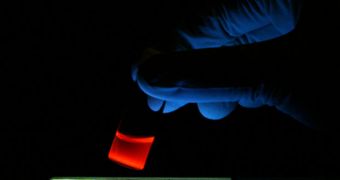One of the main reasons why cancer is so deadly today is that it's usually detected once it has already taken hold of a particular organ. Early detection is only possible through very expensive and invasive procedures. But a team of experts is working on creating an inexpensive, efficient method of finding tumors.
Scientists from the Northwestern University in Evanston, Illinois, are working on a way to discover cancer very early on, through simple procedures. For instance, in the case of lung cancer, they want to be able to detect it via a procedure as simple as a cheek swab.
This is of course very difficult to do, but the prospective advantages are definitely worth it. In fact, “early detection is absolutely not only key but probably the only way for us to win the war on cancer,” NU biomedical engineer Vadim Backman believes.
He and his team are currently at the core of an investigation meant to produce an early-detection method for multiple types of cancer. The US National Science Foundation (NSF) is providing support for this work through the American Recovery and Reinvestment Act of 2009 (ARRA).
Learning about tissue structure and composition was identified as one of the main directions of research for the team, and so the experts are developing new optics technologies that can notice these things in vivo. This approach will provide the basis for early cancer screening techniques.
The most important aspect to remember about this investigation is that it uses light as the main analytical tool in studying the structure and function of tissues. This type of research is part of a relatively-new field of science called bio-photonics.
The new type of microscopy Backman and his team developed sends beams of photons towards cell samples, where the particle bounce off whatever structures they encounter. Healthy cells have a particular pattern in which they reflect light.
Over time, the technique was perfected extensively, so that now it is extremely sensitive and able to detect very small variations from normal baselines. This is essential for the early detection of cancer cells, when only a few of them are present in the body.
Backman is optimistic that the screening method will make its way into hospitals around the world very soon. He concludes by saying that an early-detection technique based on the new microscopy could even be applied to patients in a primary healthcare setting.

 14 DAY TRIAL //
14 DAY TRIAL //